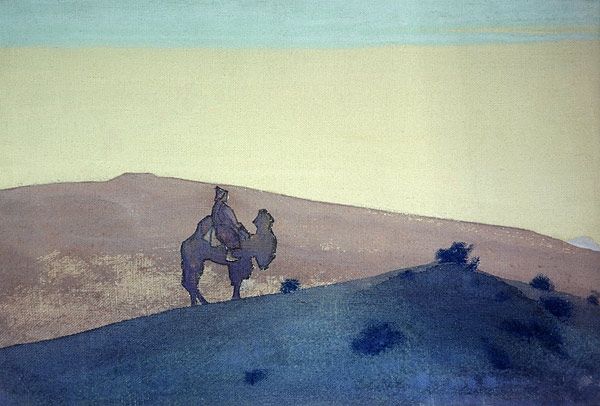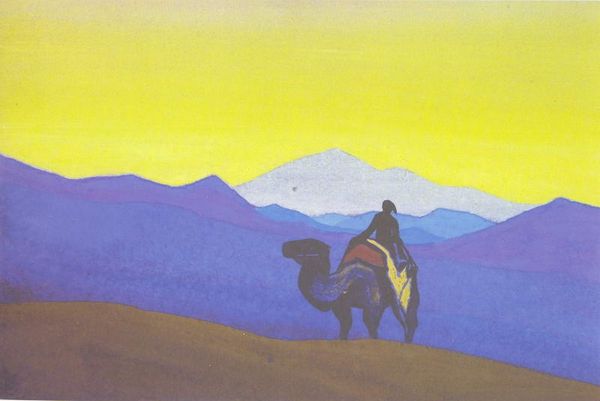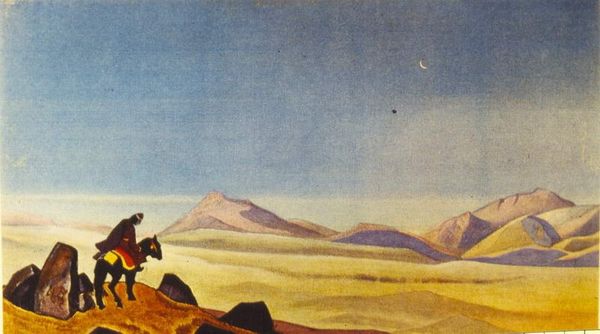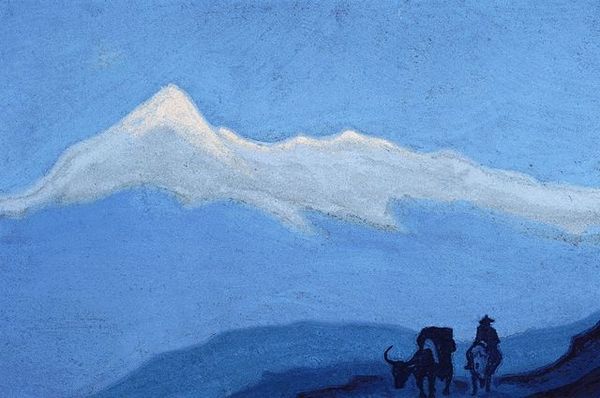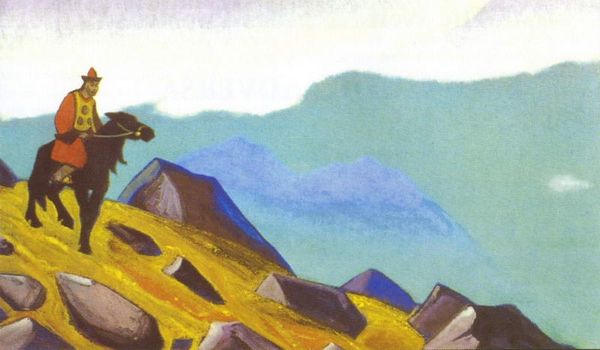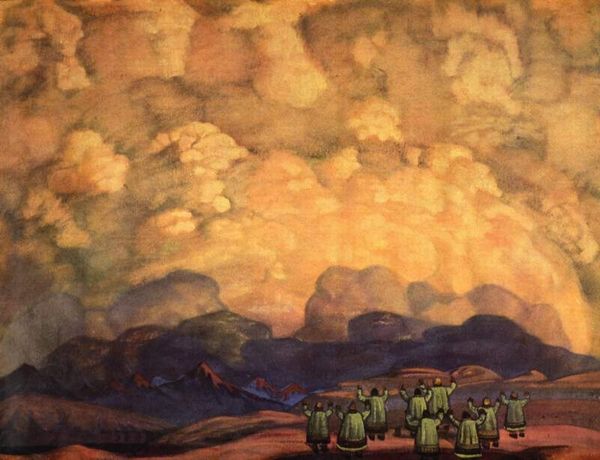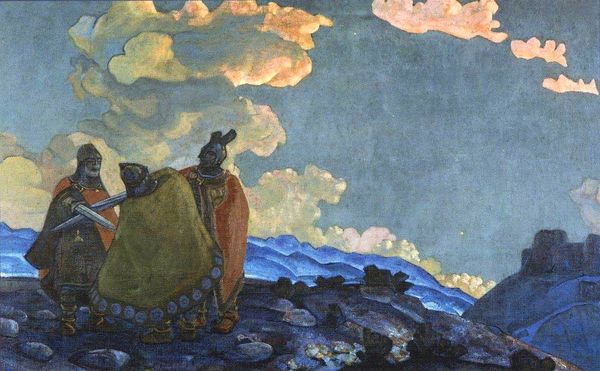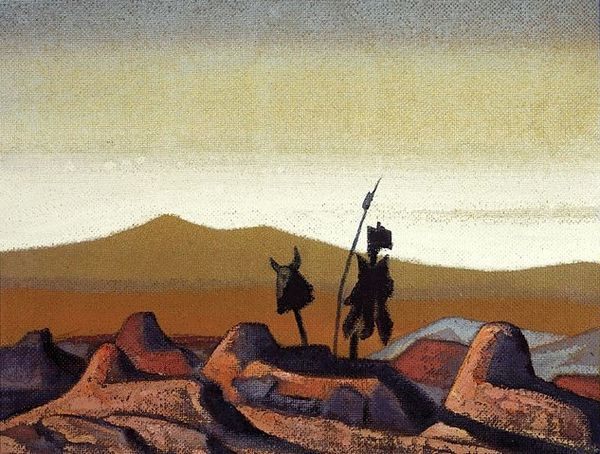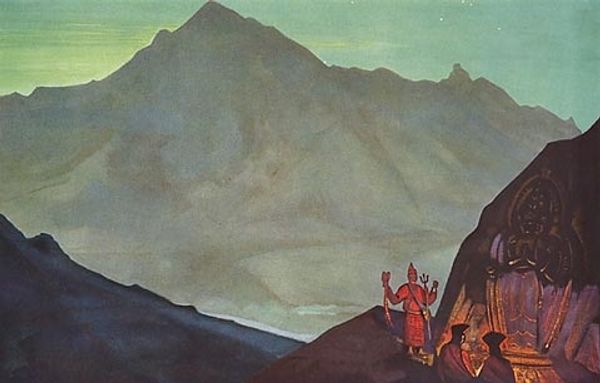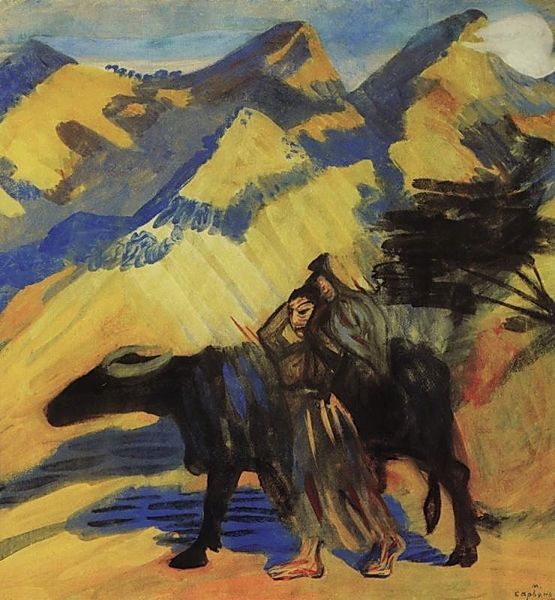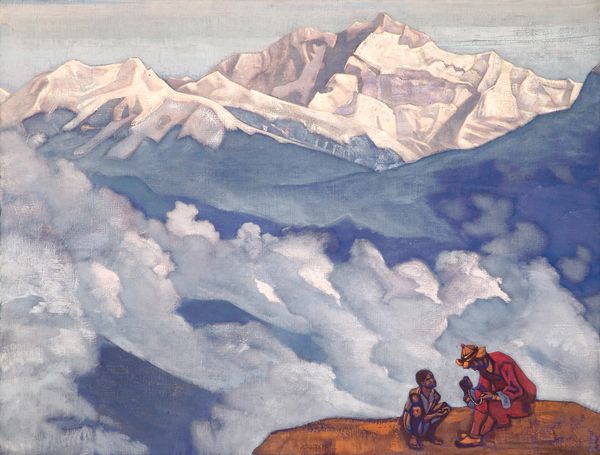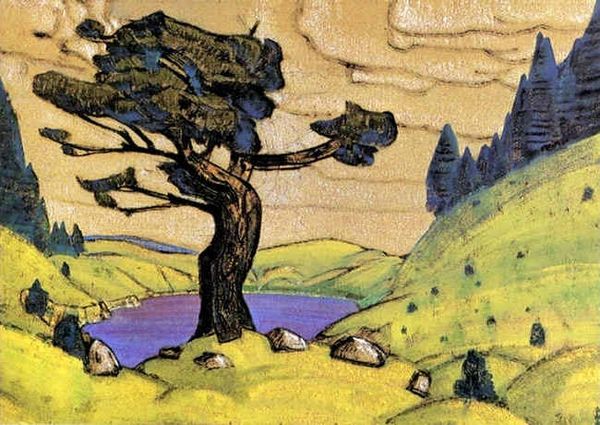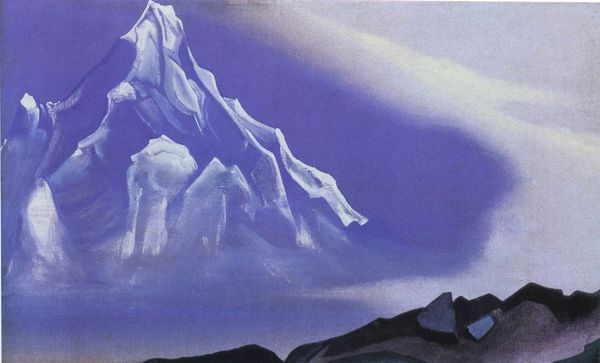
Copyright: Public domain
Editor: This watercolor by Nicholas Roerich, titled *Mother of Genghis Khan*, was completed in 1931. It depicts a silhouetted figure on horseback against a backdrop of mountains and sky. It strikes me as both serene and imposing. What do you see in this piece? Curator: The enduring symbolism in this work resonates across centuries. Look at the silhouetted figures—they are deliberately opaque. Roerich presents an archetypal image here, almost a universal mother figure emerging from a landscape steeped in cultural memory. The palette feels carefully chosen. Notice how the subdued, almost ethereal sky contrasts with the solid blue of the mountain. Editor: I do see that contrast now, but what does it *mean*? Curator: Consider the mountain as a symbol of permanence, a stable presence. Then think of the sky—it signifies the intangible, the realm of possibilities and fate. Now consider the figure’s placement; the silhouetted riders are firmly planted *between* the permanence of the mountain and the expanse of the sky. She, the mother, exists as the essential, active connection between these realms. Her very form and presence is the key to understanding these realms in Mongol culture. Editor: So you're saying it's more about what she *represents* than her individual identity? Curator: Exactly! Roerich wasn't creating a literal portrait, but rather evoking the timeless power and cultural continuity embodied in motherhood within the Mongolian context. Editor: That makes a lot of sense. It reframes my perspective completely. Thanks for highlighting that. Curator: My pleasure. Seeing how symbols operate across cultures certainly enriches one's experience of art!
Comments
No comments
Be the first to comment and join the conversation on the ultimate creative platform.
